Weird Paris: Saints and Sinners
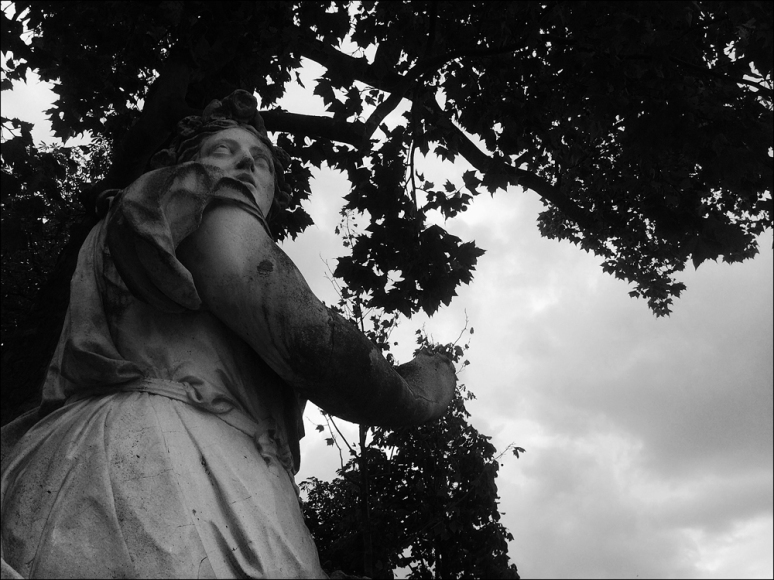
Whilst traipsing through the Jardin des Tuileries, watch-out for “Le Petit Homme Rouge” (“Pomona” by François Barois, Photographs by Theadora Brack)
By Theadora Brack
Calling all saints and sinners: Snuggle tight because it is time to crack open my slim, spellbound volume of spirited adventures in Paris for another retelling. For tricks, I’ve added a few new tales and photographs. I’ve also got the flashlights, pillows, and blankets, along with the marshmallows and bubbly for toasting. Here are eleven of my favorite spooky grounds.
Now, let’s go raise some spirits!
1. The Unknown Celebrity of the Seine
Among the artsy clutter that once adorned nearly every artist’s lair was a plaster face with a mysterious smile. These were cast from a famous death mask called “L’inconnue de la Seine,” made from an unknown 16-year-old who washed up on the banks of the river in the 1880s with an eerily pleasant expression on her corpse.
Copies quickly became popular fixtures in artists’ studios and salons as well as the inspiration for numerous literary works. Camus called her the “drowned Mona Lisa,” and Nabokov celebrated her in his poetry.
In the 1960s, the nameless girl’s visage was resurrected once again as the face of “Resusci Anne,” the rubber CPR training dummy. Because of this, hers is sometimes called “the most-kissed face of all time.” Consider tossing a flower in the water for her as you stroll along the Seine.
2. Le Petit Homme Rouge
Whilst traipsing through the Jardin des Tuileries, do keep your eyes peeled for “Le Petit Homme Rouge.” We have astrology-maniac Catherine de Médici to thank for this angel of vengeance. Prior to becoming an otherworldly imp, personal butcher Jean l’Écorcheur (a.k.a., “the Little Red Man”) had earned his bread as the queen’s favorite henchman.
Cutting to the chase: After making a killing (so to speak), little Jean was murdered in turn by Catherine herself, apparently because he knew too many of her darker secrets. I know! Sometimes it just doesn’t pay to shine at the workplace. Like the old Russian proverb puts it, “The nail that sticks out gets hammered down.”
During his final moments Jean is said to have muttered, “Je serai de retour!” beating the Terminator’s “I’ll be back” by two hundred years.
And back he came.
Like a bad penny, that’s how he rolled. “Le Petit Homme Rouge” not only revisited Catherine, but he also dilly-dallied with Henry IV, Marie Antoinette, Louis XVI, and Napoleon—never spreading joy but always bringing horrific fortune to the royal lot.
As Catherine herself might say with a little hindsight vision now, “Never double-cross a butcher—he’ll get you coming and going.”
3. Saint Denis
During my Rocky-inspired runs on the steep slopes of Montmartre, I often pay homage to the patron saint of both France and headaches, Saint Denis—who, after some Romans gave him the décapitation treatment in nearby Abbesses, reportedly picked up his own head and hiked on over the hill another eight kilometers (all the way to the eponymous suburb), stopping only once for water. I’ll have what he’s having! It just goes to show you the importance of staying hydrated while exercising. Now I’m a believer.
Heads-up: The saint’s statue is located in the little Square Suzanne Buisson at 7 rue Girardon, near the top of the hill. But if you go, for heaven sakes don’t be a bling ring menace. Back in the day, as a daredevil tried to pet, borrow, or steal one of the ornamental gold pigeons that once graced this site, he was suddenly pushed by an invisible force. According to his motley crew, after the shove, he took a tumble, falling on his very own lance. Ouch. “R-E-S-P-E-C-T,” as Aretha would say. Just do it.
Weird Terminology Time
Saint Denis is far from the only saint to have kept on going like a certain Battery Bunny despite being rendered sans tête. Over the years there were eventually enough of them, in fact, that the term “cephalophore” was coined, from the Greek for “head-carrier.”
4. Eiffel Tower
The worlds tallest building for more than 40 years, the Eiffel Tower was a virtual magnet for suicides. From the get-go, folks started jumping off it like there’s no tomorrow. In fact, it’s still one of the most popular spots to commit suicide in all of Europe. She may not have been the first to say it, but perhaps she was the most memorable: “So sorry to rain on your parade,” Princess Anna Troubetzkoy shouted, as she lept from the top on Bastille Day in mid-July 1931. At first it was ruled accidental, but then a farewell note was found in her bag.
The mysterious back story: A few months before, Anna had married a certain Prince Sergei in New York. They kicked off their European honeymoon in June and were set to renew their four-month vows in August when they reached Russia. So what happened? Was she already envisioning endless crash diets and yet another round of dress fittings? (Heck, we’ve all been there!)
Nobody knows for sure, but obviously something had already gone enough astray between the lovebirds to make her decide to fly the coop so dramatically.
5. Pont-de l’Alma, Princess Di
Just outside the Pont de l’Alma Métro station is the “Flamme de la Liberté” memorial, which now serves double duty as the unofficial Princess Di shrine. Pilgrims still leave poems, flowers, and love letters there.
According to my friend Ghislaine, who worked on two documentary films about the crash that killed the fallen Princess, “There are definitely ghosts in the Alma tunnel. After many nights spent filming there, I can tell you it’s eerie. It was if Diana’s ghost was trying to urge us to find the truth. And I was certainly not the only one to feel this.”
6. Hôtel Cluny Sorbonne
Trekking to Paris? I’ve got the place for you. Located in the Latin Quarter near the Université de la Sorbonne and Panthéon, the Hôtel Cluny Sorbonne has always attracted starving poets and Lonely Hearts, too. Here La Vie de Bohème can still be found in its coveted reflection-inducing garret rooms.
Poet on Fire: In fact, in room 62 is where visionary poet Arthur Rimbaud composed the ultimate break-up, “he’s just not into you” opus, upon his fiery return to Paris in 1872.
And speaking of another Rimbaud poem, “Eternité,” do keep a watch for spirits. The place is rumored to be flush with glowing literary orbs. Experiencing writer’s block? Perhaps one will lend a guiding hand.
Just bask: “I have stretched ropes from bell-tower to bell-tower; garlands from window to window; chains of gold from star to star, and I dance!” Monsieur Rimbaud brilliantly penned.
7. Arc de Triomphe
Almost immediately after it was completed, people began heaving themselves off the Arc de Triomphe’s rooftop parapet, after climbing all 284 steps to get there.
(Did they not spot the gift shop?)
Occasionally a skirt would tangle and catch on a cornice, leaving the poor women (which nearly all of them were) dangling a few long moments above the horrified crowds below, until the seams would give way and they’d plunge to their deaths.
Figuring out which police station to contact after one of these unfortunate incidents has always been a major source of confusion, because the monument sits at the juncture of four arrondissements and they’ve never clearly settled whether it’s the departure spot or the point of arrival (i.e., the sidewalk) that should be the determining factor when establishing proper jurisdiction.
Atop the Arc, look out for a particular spirit named Rose. After quarreling with her beau on Bastille Day in 1914, Rose jumped, narrowly missing throngs of tourists in her tumble. Our hobble-skirt clad fashionista was “dressed expensively and well,” according to the newspaper report.
Just what is it about Bastille Day that drives folks to make the leap? Is it the uniforms or the martial music?
8. Notre Dame
A young woman known only by the initials “M.J.” appeared at the cathedral on a cold and rainy October day in 1882, begging to climb the tower. She was refused, because back in the day, single women weren’t allowed to ascend without a chaperone.
So what to do? She quickly spotted an elderly lady who was also touring the church and decided to make fast friends. After buying her breakfast at a nearby café, M.J. asked the lady to tour the tower with her. The older woman agreed and they headed back to the church.
By the time the pair reached the upper parapets, rain had begun to pour. While her new-found companion sheltered in the bell-ringer’s room, the maiden screamed and apparently jumped. According to witnesses, she fell onto the spiked railings below and was neatly severed in two. No identification was found in her bag, but her kerchief was marked with the initials “M.J.”
Poof: As for the old lady who agreed to escort her, she seems to have disappeared into thin air, too. If you happen to visit Notre Dame, keep one eye peeled for either one—they’ve both been seen flitting between the gargoyles.
Pack the opera glasses, I say. Do let us know if you spot them!
9. Dalida
On May 3, 1987, Yolanda Gigliotti, better known as the pop idol Dalida, took a handful of pills, put on her sunglasses and “left our world for another,” as a fan website afterwards put it. Ever since, the house has never felt quite the same. However, sometimes a shadowy figure appears at the window as if to greet her fans—and she certainly still has them by the millions.
In addition to the house, the late diva’s life-size sculpture is in the Cimetière de Montmartre, while her rather busty bust is at the junction of rues Girardon and Abreuvoir. Both memorials are often rubbed for luck, especially before athletic and musical competitions. Her greatest hit? “Itsy-Bitsy Teenie Weenie Yellow Polka Dot Bikini” . . . of course.
10. Cimetière de Montmartre
After spending time with the head-to-toe Dalida, visit Marie Taglioni’s shrine, in another part of the same cemetery. Paying homage to the ballerina, dancers from all over the world still leave their well-worn ballet slippers (sometimes with little notes). The sight of these heartfelt gestures has never failed to lift my own spirits. It’s true.
Winding it back: Though Marie Taglioni was hardly the first to dance en pointe or don the muslin skirt (skimming the ankle, much to the delight of every binocular-carrying fan!), she’s the one who made it her own.
“Shorten your dress just a little,” begged one admirer, according to a newspaper report in 1884. Taglioni’s popularity launched her name into the lingo: the verb Taglioniser means “to be slender and graceful.” And most coveted coiffeur? À la sylphide!
11. Just to End It All on an Odd Number: Cimetière du Père-Lachaise
After dancing with the stars in Montmartre’s marble orchard, hotfoot it on over to the Cimetière du Père-Lachaise, where you’ll not only find the graves of famous folks like Chopin, Balzac, Modigliani, Proust, Oscar Wilde, Edith Piaf and, some say, Jim Morrison, but a few final resting places that are even more interesting because of the behaviors they induce.
One of my favorites is the grave of Allan Kardec in section 44. Here you can discreetly watch as true believers in spiritualism not only come to caress the shoulders of the bronze bust glaring from its niche (under what looks to be a crude prehistoric dolmen), and to whisper messages in order to “telephone” their dead loved ones in his ear, but often also to put in requests for winning lottery numbers.
Behind the tomb is an official warning from the city of Paris (akin to the surgeon-general’s warning on a pack of cigarettes) to the effect that the municipal government can’t be sued if your numbers don’t win. On the flipside: France is still a hotspot of afterlife activity—it’s no accident that words like séance, clairvoyant, and déjà vu are all French terms. So Bonne Chance!
Tip: It’s worth buying a map at the entrance to help you locate Kardec and the others. The best time to watch the action is early in the morning.
Clipping from Allan Kardec: ‘Unshakable faith is only that which can face reason in all human epochs.”
Now, let’s seek out more traces from the past. Carpe diem!

Nine Lives: Théophile Steinlen rescued many stray feline muses at the Cimetière Saint-Vincent. “The Cat Cottage” is quite fitting because here is where the artist is now buried. Wild kitties still keep watch over his grave.

Late in life, civil servant Léon Dutilleul, a.k.a. “Le Passe-Muraille” (the Wall-Passer), discovered that he could walk through solid matter. Bank robberies and love affairs just got easier for Monsieur Dutilleul. Eventually his hanky-panky caught up with him, and now he’s doing time for his crimes at the Place Marcel Aymé in Montmartre. (Based on story by Marcel Aymé, Statue by Jean Marais)

Pilgrims from all over the world flock to the bust of Dalida (the female Elvis of France) at the tip of rues Girardon and Abreuvoir in Montmartre, to caress her for luck.

Calling all Harry Potter Fans: Alchemist Nicolas Flamel hasn’t left the building. According to the tittle-tattle, the wizard is still working his magic at the newly restored Saint-Jacques Tower.

Just a cobblestone’s throw away from Sacré Coeur (pictured), you’ll find Saint Denis in the Square Suzanne Buisson, presiding over lively Pastis-fueled pétanque matches during the warmer months.

Two imperial eagles and a statue of the Virgin Mary guard Major Henry Lachouque’s 19th century house at 4 rue de l’Abreuvoir in Montmartre. The officer was also a French historian, penning a Napoleonic-sized body of work about Napoleon.

La Vie en Rose: Edith Piaf (“The Little Sparrow”) credited Saint Thérèse (“The Little Flower”) not only for restoring her eyesight, but also for helping her catch a first lucky break while she resided on rue Véron in Montmartre.



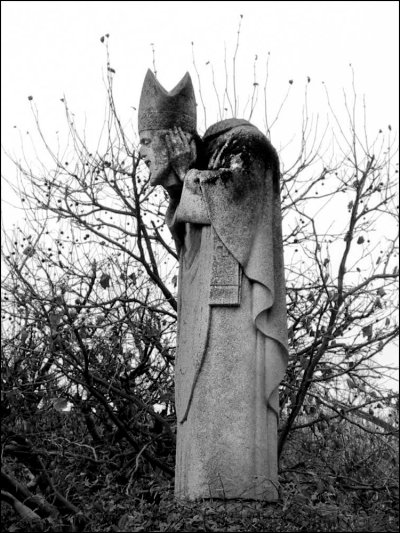
















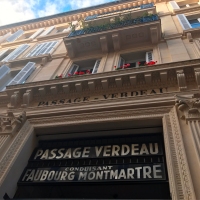
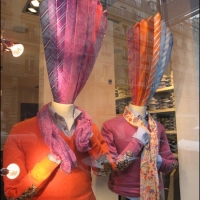
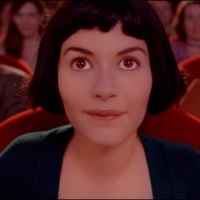
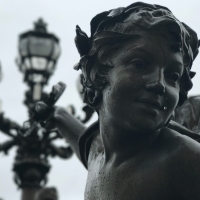
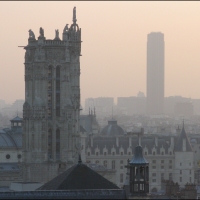
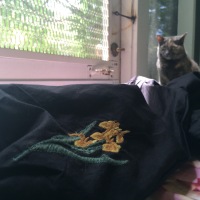

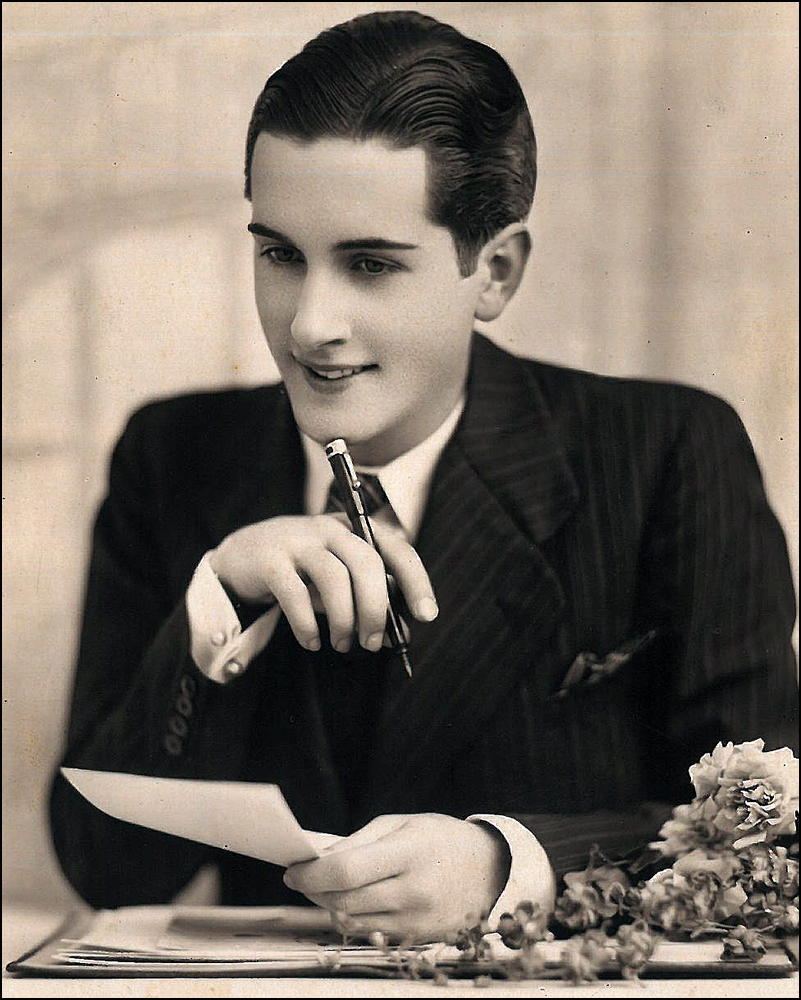

Fabulous and moody post for All Saints (or Halloween as the marketers would have it) 😉
LikeLike
Ah, thanks! I especially loved the tidbit about Théophile Steinlen rescuing stray feline muses at the Cimetière Saint-Vincent in Montmartre. His wife was not happy about it!
The Musée de Montmartre and the Musée du Petit Palais have quite a few Steinlen’s Kitty-inspired works in their collections.
I especially love his “L’Apothéose des chats à Montmartre.” Have you seen it? I’ll find a copy and attach it to the end of the post. It’s Fantastical! It’s PERFECT.
Stay Tuned!
Theadora
LikeLike
That’s exactly what I thought!
LikeLike
Merci! Merci!
~Theadora
LikeLike
Je suis contente d’avoir trouvé votre blog par l’intermédiaire du blog de Sisyphus, un autre blogueur que j’apprécie. Looking forward to reading more soon.
LikeLike
Again, thanks for your kind words. I’m also a fan of Sisyphus. He’s a talented wordsmith!
~T.
LikeLike
This is fantastic! Love all the insider info. Only wish I could be there tonight.
LikeLike
I highly recommend walking or running around Montmartre. So many of my favorite Sacred Grounds are located up on the hill: Dalida, “Le Passe-Muraille” (the Wall-Passer), and Saint Denis. Oh, and the view of Paris from Sacré Coeur is amazing—night and day. Enjoy the weekend! ~Theadora
LikeLike
Fantastic stuff. A long read, but worth it. I’ve always loved the story of the drowned woman but never saw a picture of the artist bust before so thanks for that.
And with “cephalophore” it’s brilliant that there’s a word coined for head carrier.
LikeLike
Thanks for your swell words. It was an interesting post to create. Each year I add a few more stories. Old newspapers are a great resource. “L’inconnue de la Seine” is such a mystery. I’d really like to learn more. Everyone fell in love with her. Man Ray’s portrait is especially lovely. (I’m also trying to learn more about the little statue on rue Véron. I do love the research phase.) Enjoy the weekend! ~Theador
LikeLike
Wow! What a terrific post! A real Halloween treat.
LikeLike
Merci. Years ago, I discovered Dalida’s house in Abbesses-Montmartre on a cold, rainy All Saints’ Day. What a talent.Have you heard her “Itsy Bitsy Petit Bikini” song? It’s AB-FAB. So is her “Bambino” number. I’m off now to find my Dalida records! ~Theadora (I often spy them at the flea markets. Great-looking covers.)
LikeLike
Theodore: Check out Suzanne Stroh’s blog on Eva Palmer. It’s right up your alley. I will try and post something on my Romaine Brooks and also take a look at Strange flowers if you don’t know it. We have common interests and subjects. Cassandra Langer >
LikeLike
Thanks for the tips, Cassandra. I’ll check them out over the weekend. I appreciate it! ~Theadora
LikeLike
Excellent post! This is adult Halloween stuff. And I thought Paris was only light and love! Cheers!
LikeLike
Light, Love, and Mystery. Always! Back in September, I got to visit the newly restored Saint-Jacques Tower. Fantastical view. Sadly, the tower is only open a few months a year. I’ll keep everyone posted on the 2015 dates. My tip: Arrive early. Yes, the early bird gets the view! ~Theadora (Have a great weekend!)
LikeLike
Theadora! Your post is a tour de force on Paris. It is a book unto itself. Amazing and deep. I feel lucky to have found your wonderful blog.
LikeLike
Well, thank you. I always appreciate your thoughtful words! As you know, each year I add a few more stories. Again, old newspapers are such a great resource, along with dinner party chit-chat with friends. I’ve already started working on next year’s edition. I always enjoy seeking out the past in Paris. Again and again, I fall head-over-heels with the city. ~Theadora
LikeLiked by 1 person
Loving this post my friend – so happy to see your wonderful guide and history again. Was getting worried. This was a great read, hope your new job is all the things you have hoped for!
LikeLike
It’s great to be back, Mary! I’m missed seeing YOUR work. My weekly inspiration! What have I missed? I plan to investigate over the weekend. I’m currently cooking-up a post about the vitrines along Boulevard Haussmann. I recently got to see Diane von Furstenberg at a vitrine unveiling at Galerie Lafayette. They’ve been celebrating her iconic wrap-around-dress. The street was packed. Cameras and wrap-around-dresses abound! And she looked FABULOUS. ~Theadora (Here’s a to a productive and creative week!)
LikeLike
Such a great note Theadora – I’m so happy for you, loving what you do. I think Diane von Furstenberg is in her 70’s right, and she does look fantastic. What an exciting event to go to, I’ll bet you loved it. Yes, it is becoming a very creative week and having a ball – hope to have several pieces to post. Thank you for your awesome enthusiasm and have a week – looking forward to your next post! Mary
LikeLike
Thanks, Mary! Say, you have been busy. I especially loved the “Pumpkin,” the “Orchard Blossoms,” and the “Mist at the Reservoir.” The pumpkin really pops with the black background. So velvety. You are another one in the creative zone. Bravo! ~T. (And thanks for your words and enthusiasm. Repeating myself: Positive energy is contagious.)
LikeLike
Lovely post of many familiar places!
LikeLike
Thanks, Kim! Do you have a favorite sacred ground in Paris? ~T.
LikeLike
Love St. Chapelle but too many ‘favorites’ to count! 🙂
LikeLike
YES. St.Chapelle. Adding it to my list. (I haven’t been in awhile.) I know! There are too many favorites to count! 🙂
~T.
LikeLiked by 1 person
Hauntingly fabulous tour of Paris …!
LikeLike
Merci! Thanks for the giggle. And I’ve missed your prose. Have a lovely weekend, ~Theadora
LikeLiked by 1 person
I have to get back to The Great Divide. Brandon and Ray as characters keep growing in my minds eye, and I have to let them out … Thanks ….
LikeLike
Happy Halloween my dear. What a wonderful read. I was hooked and could not wriggle free until the last of it. xo
LikeLike
Bonjour! Bonjour! Goodness. Gracious. Ah, I forgot to add a caption to the bottom shot of the perfume bottle. Sortilège was created by nose Paul Vacher for Le Galion in 1936-1937. I do love this nose. I think he also created Arpège for Lanvin in 1927 and Miss Dior for Dior in 1947. Say, have you written a nod to Monsieur Vacher or Le Galion? I’ve missed your Scented Essays! ~Theadora (And Videos!)
LikeLike
Thank you darling! No I have not yet explored Le Galion yet but I am dying to. Some many perfumes and only two nostrils! My constant lament. I have lots of new posts that I think you might enjoy. Maybe even a few set in Paris too! Oh yes 21 Bonaparte! That’s the one. I sure have missed your writing too. I am going to try and keep up! xo
LikeLike
Oh, you are so much to watch!
21 Bonaparte. What a delicious segment. A towering frosted chocolate Martini. Elizabeth Rosemond Taylor. And Vicky Tiel. I thoroughly enjoyed the images, the backstory, and fragrance review. I also loved your mantra: “Don’t wear what they say you should wear, wear what you love!” I couldn’t agree more.
More videos and martini cocktails, please. Let it hail. Let it hail. Let it hail.
~T.
LikeLike
Reblogged this on Of Glass & Paper and commented:
Secrets of a most secretive city…
LikeLike
Merci! Thanks for the super swell shout-out about the secrets of a most secretive city! ~Theadora (Enjoy the week!)
LikeLiked by 1 person
Wonderful post, T! Such a fine selection of macabre tales, crackling with brilliant lines. (There’s something strangely reassuring about the fact that there’s a specific word for head carrier. And something deeply odd about so many artists being inspired by a drowned girl.) Love your moody photography to bits!
LikeLike
Thanks, Richard! I thoroughly enjoyed the research. In fact, I’ve already started working on next year’s edition. Over the weekend, I was given a copy of Henry Hayne’s 1902 “Paris: Past and Present.” Great subtitle names: Orgies at the Tuileries, Queen Margot’s Great Love, The Old Clothes Market, The Treachery of a King, Decay of Old Mansions, and Beginning of its Decadence. It’s also full of beautiful illustrations. And like most old books, it has a great smell. Fun score!
Enjoy the week, Theadora
(I still often spy old death masks at the flea market.)
LikeLike
This has got to be the best Halloween post I’ve ever read! Je serai de retour!
LikeLike
Funny! This has got to be the best comment I’ve ever read! Like a shiny penny, do return!
~Theadora
(Thanks for making my day. My week.)
LikeLiked by 1 person
well, is your middle name “Excellence”, mademoiselle TB?… 🙂 both article & pix are 20/20, comme d’hab’… I lived in Paris for 8 years and merci de me faire revivre pleasant souvenirs… ❤ have a fabulous November and HHH = huge heartfelt hugs… ❤ P.S. I have no idea or concept of being a "sinner"… c'est grave, Dr Thea?… 😉
http://myvirtualplayground.wordpress.com/2014/10/08/your-daily-life-is-your-temple-and-your-religion-khalil-gibran/
LikeLike
Your words made me smile! Dear Mélanie, I do like your site’s new name. Playground, indeed. And as always, your photographs are gorgeous. I’m very happy to see them again. As always, thanks for the daily inspiration!
~Theadora
(I especially loved the shot of the garden through the drinking glass. FABULOUS.)
LikeLike
Fantastic photo essay.
LikeLike
Merci! The photographs in Montmartre were taken during a recent stormy Saturday afternoon. The temperature was still warmish, and the sky was all dramatic-looking, flaunting fast-moving dark clouds, along with tiny bright blue patches of sky. A perfect day to hit the cobblestones.
~Theadora
LikeLike
Ahhhh, life is good. Theadora is back with another enjoyable post! I was debating as to what was my favorite until I got to the French government not being able to be sued. That took the proverbial cake! Welcome back, T., and hope you’re having a glorious weekend. Just got back two weeks ago from another round in Franche-Comte. I did get to Dijon but only for a couple hours. Lovely, though!
janet
LikeLike
Bonjour, Janet, Wow! So you trekked it back to France! That’s fabulous, fabulous news. Throughout the week, I’ll read your reports. I bet your photographs are gorgeous. What did you think of Dijon? Did you score any mustard? I know! I know! I always ask you this question.
Have a productive and creative week!
~Theadora
(It’s great to be back.)
LikeLike
Learned a lot of things here! Spooky and amusing, too. One of the best blog posts perfect for Halloween.
LikeLike
One of the best blog comments! Most of the sites listed here are located in parks or gardens. Perfect quiet spots for reading and reflection.
~Theadora
(Thanks for your kind words.)
LikeLiked by 1 person
Fab post – made me long for Paris…roll on April. I too love Montmartre and its quiet corners, “far from the madding crowd” around the Sacre Coeur and Place du Tetre. Bizarre incidents are not just confined to Paris though – I awoke on Halloween to find a “graveyard” planted on a neighbouring lawn! Don’t we all love a spook?
LikeLike
Merci, Mary! Yes, I agree. I think we all dig a wee spook every now and then. A graveyard? Yikes! ~Theadora (By the way, I followed your homemade pasta recipe. It was fabulous, fabulous. My guests raved about it. A Dinner Party hit! Again, thanks!)
LikeLike
My own spirits were lifted by this post. Just wish I could walk through walls myself–it would be so handy to be able to get through the bureaucracy that surrounds me in my work world! Glad you give me Paris to think about meantimes . . . . thanks, always.
LikeLike
Dear Martino, Your words lifted my spirits! I’m looking forward to hearing about your trip to Paris. Let me know how it goes with Allan Kardec at the Cimetière du Père-Lachaise. Don’t forget to pack your camera and notebook (for jotting down numbers). Good luck, kind sir! ~Theadora
LikeLike
Reblogged this on Love That France and commented:
Paris By Theadora Brack
LikeLike
Merci, David!
~Theadora
LikeLike
You know I enjoy this post every year and 2014’s redux did not disappoint. Why do I feel the need to pick my favorite? It would have to be le Petit Homme Rouge…I’d love to dig a bit and some M@-specific incidents. The tales from Princess Di’s Alma Tunnel give me that familiar chill, the sick delight I feel when I know a spirit is nearby! [No, I’m not that nuts! :0] Was the tunnel always named ‘Alma.’ Does it mean ‘soul’ in français too? An even eerier coincidence.
LikeLike
Marie Antoinette. Yes! She also spotted Petit Homme Rouge.
And speaking of M.A., recently I’ve discovered a new beauty institute in Paris. Get This: The brochure reads very much like a Palace A-List. Their facials and massages are named after the likes of Madame de Pompadour, Marie Antoinette, Joséphine, and Gabrielle d’Estrées, favorite mistress of Henry IV. “Diane de Poitiers” (Henri II’s favorite, famed for quaffing liquid gold), and the “Aliénor d’Aquitaine” (the “beyond beautiful” wife of Louis VII) are also listed!
You’d love it.
(Next year, I’ll have to add the Moberly–Jourdain incident (or les fantômes de Versailles). Have you written about the two schoolteachers who spotted Marie Antoinette in 1901? Their book “An Adventure” was written in 1911.)
Enjoy the weekend!
T.
LikeLiked by 1 person
I’d get the Aliénor, mos’ def!
I did a blog post maybe 3 years ago about the Moberly Jordain “time warp.” [Good thing I’m in public or I’d burst into song.] Would just love to revisit the Hameau on that ‘majickal’ day & see if I can conjure up our dear M@. I know Joséphine hated sleeping in the Tullieres (sp?) because she “always felt the ghost of that poor queen watching her sleep.”
LikeLike
Wise choice! I decided to go with the Catherine de Médici treatment: Massage and facial with rose- and peach-scented scrubs, creams, oils, and mists. During the procedure, I could hear the nearby Saint-Sulpice bells ringing. Heaven. I was in heaven.
So you wrote about the sighting of Marie Antoinette? Link, please!
T.
LikeLike
http://tiarasandtrianon.com/2012/11/01/the-haunted-trianon/
it’s an old post…I wonder if it’s any good. Hmm.
LikeLike
Like bishop holding head, reminds John the Baptist.
LikeLike
Hello Carl,
I agree. It’s a beautiful statue. The Square Suzanne Buisson is a fabulous little park. During the warmer months, I love to watch the pétanque games, while reading a book. A perfect way to spend an afternoon!
Enjoy the week,
Theadora
LikeLike
She brushed the bone dust off her ruby slippers. Combed the cobwebs from her hair. Dumped the empty champagne bottles in the trash can. “You must agree Tinny. A picnic in the catacombs was the perfect place to start our journey through Theadora’s weird saints and sinners of Paris. It’s not your fault the winged monkeys, scared out of their little red jacket, took flight with our map and we had to spend Halloween with those old skulls and bones.” Happy to be above ground the one wearing ruby slippers, the other carrying the empty basket crossed the avenue to the patiently waiting Theadora.
LikeLike
I love this paragraph, Virginia. You’ve picked one of my favorite sacred grounds in Paris: the Catacombs. I never fail to cry. My first visit! Goodness. Gracious. I sobbed so much that the security guards asked me if I needed an escort “up and out to the fresh air.” It’s intense. Overwhelming. I always leave transformed and inspired. “Carpe diem!” I always say to myself. (And then it’s off to a post-visit chilled glass of wine on a nearby terrace for more mulling over life.)
Big Hugs!
T.
(I’m still looking for the winged monkeys and the maps. We’ll find the little darlings!)
LikeLike
Very interesting. Thanks.
LikeLike
Thank you. As you know, I’m a fan of your work. I especially loved the “Sculpture of the Sea” photograph series. “Not all those who wonder, wander.” True! Perfection.
Enjoy the weekend,
~Theadora
LikeLike
Thank you. Have a wonderful weekend too.
LikeLike
Theadora– how do you find all these things?!! You have the best researched blog I read. Loved the statue of Leon Dutilleul coming out of the wall. Is he just a fictional character, or based on a real person? Great post once again!
LikeLike
Thanks, Rhonda!
I also love the statue. Located at Place Marcel Aymé in Montmartre, the “Passe-Muraille” was created by the multi-talented Jean-Alfred Villain-Marais (actor, director, and sculptor). It’s a salute to writer Marcel Aymé. One of Monsieur Aymé’s characters, Leon Dutilleul, had the ability to walk through walls. I highly recommend: “The Man Who Walked Through Walls” (Pushkin Collection).
No spoilers here!
~Theadora
LikeLike
Thanks for the recommendation Theadora– that’s why I love your blog– there’s so much substance.
LikeLike
Theadora, The photos are masterpieces! Thanks for making me home-sick for Pars!
LikeLike
Maurice, you create masterpieces! Your photographs of Paris are stunners, each and every one of them. Repeating myself: It was great fun working with you earlier this year. I thoroughly enjoyed the experience. We’ll have to collaborate again.
And BRAVO on the gallery news!
~Theadora
https://peopleplacesandbling.com/2014/03/14/paris-teaser-lights-camera-action/
https://peopleplacesandbling.com/2014/03/27/paris-match-lets-go-to-the-movies/
http://mauricesapiro.com/
LikeLike
Spellbinding 😉
LikeLike
Ab fab post T. Love your quirky sense of humour! It was nice the revisit Paris with you – I have been quite remiss with my blog posts due to a crazy busy work and home life since our return from France, but you have inspired me to get cracking !
LikeLike